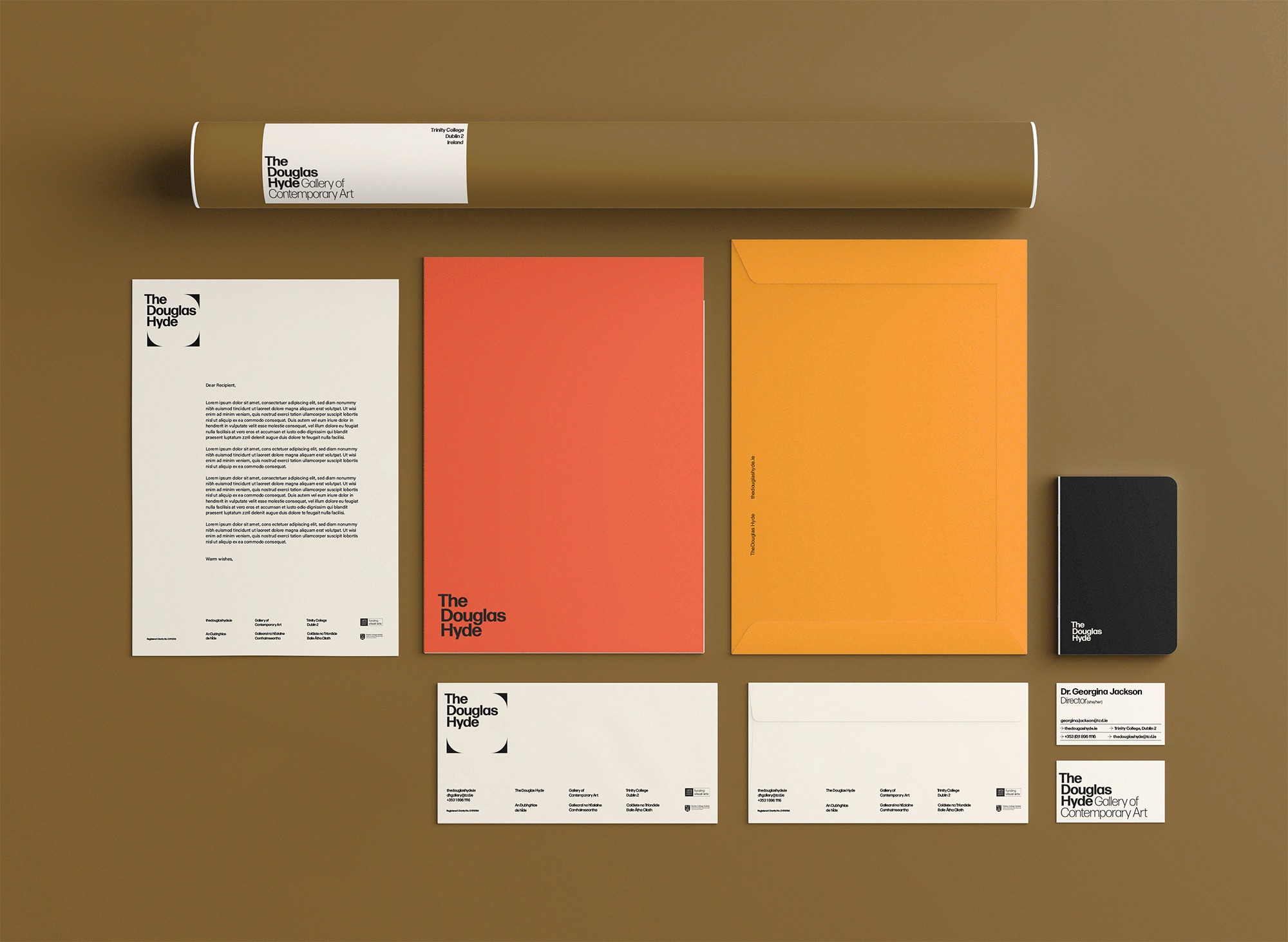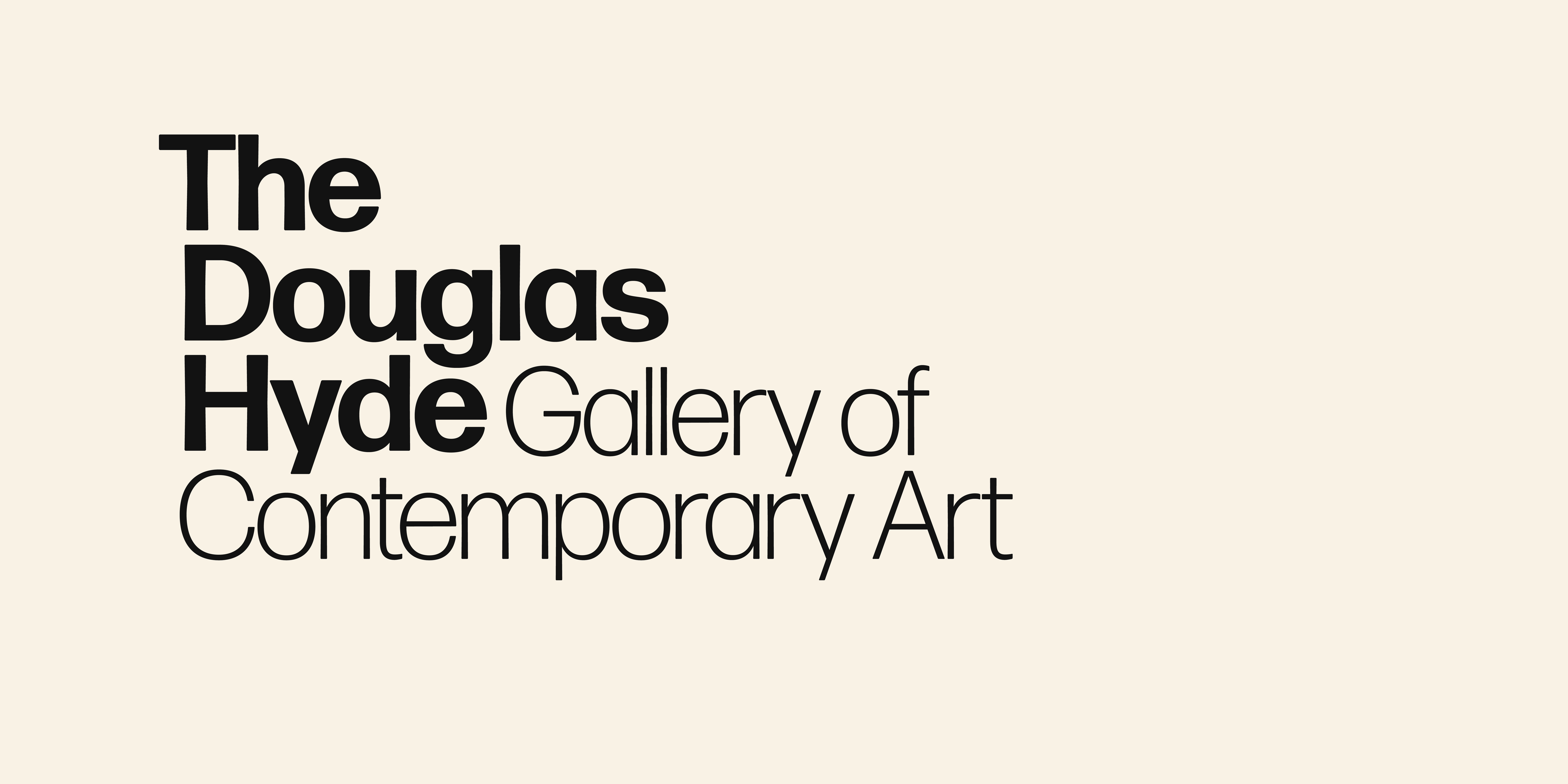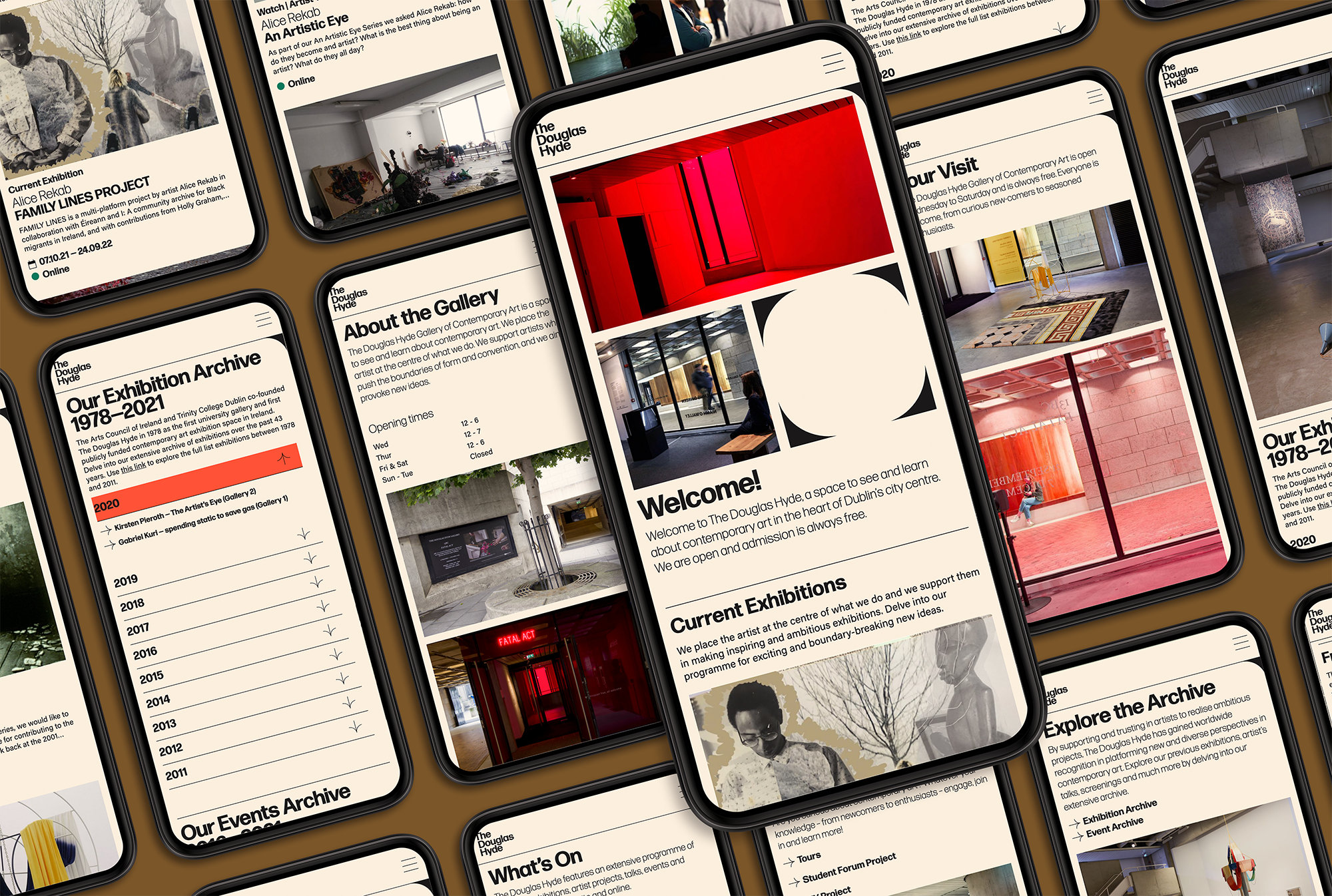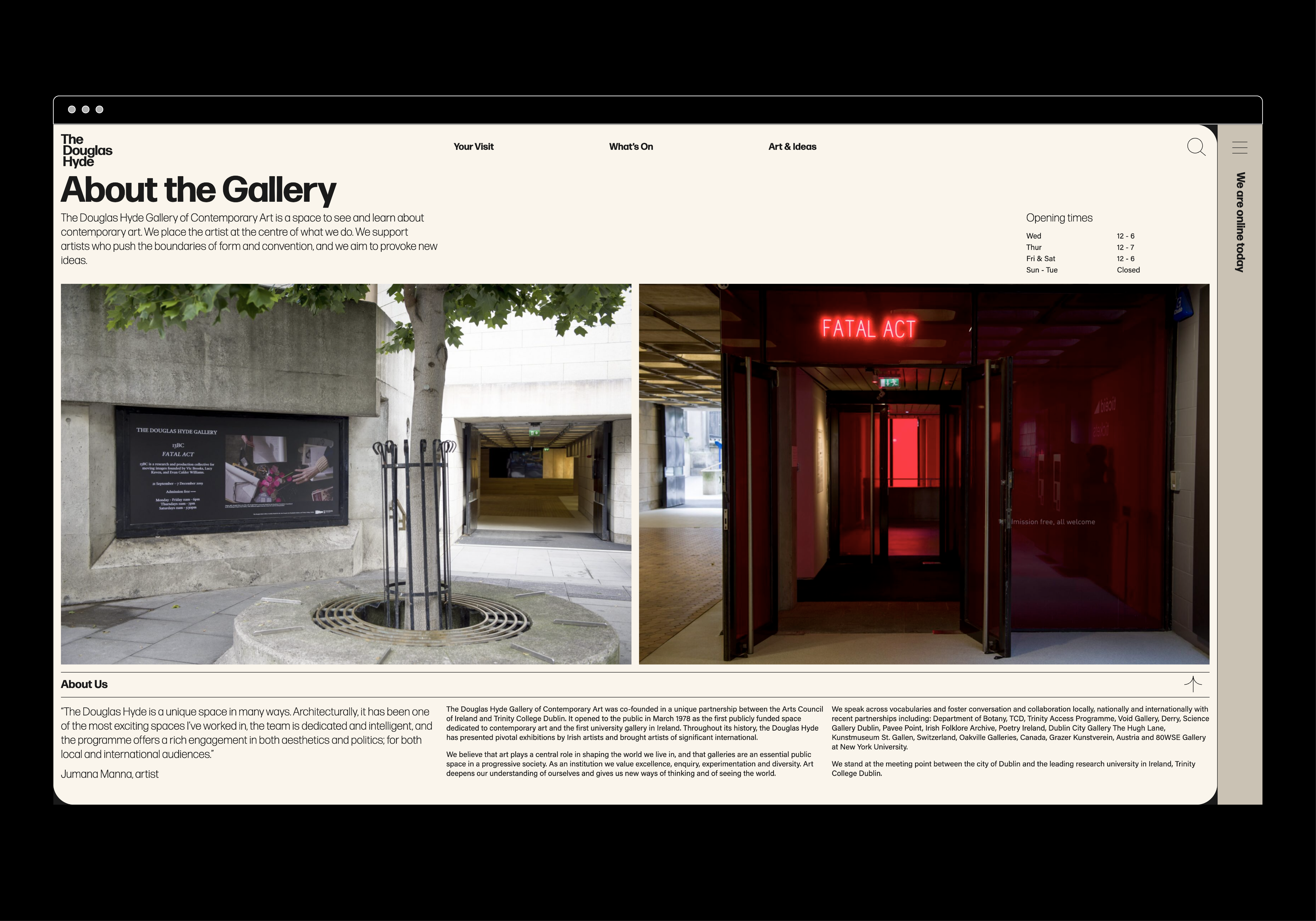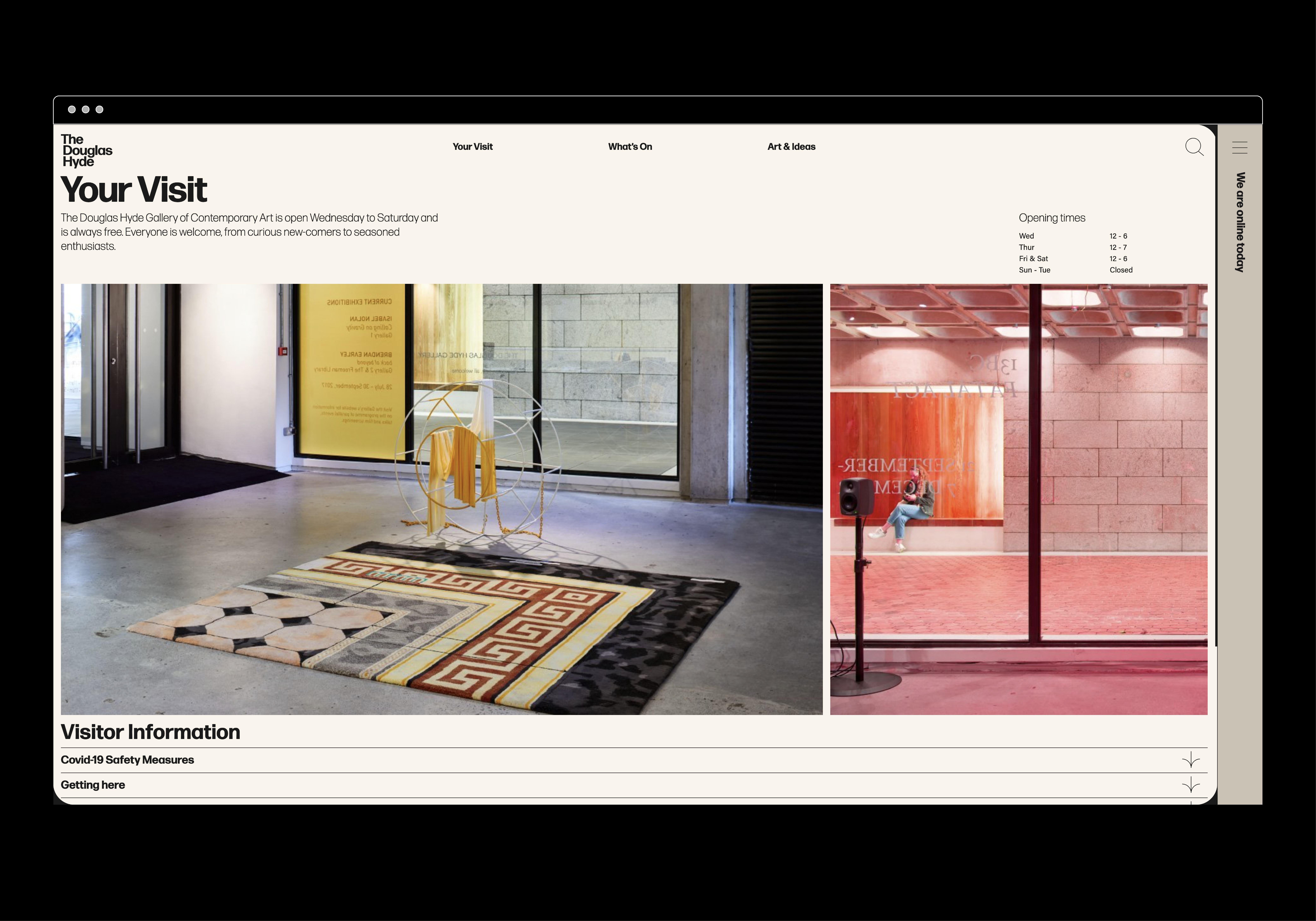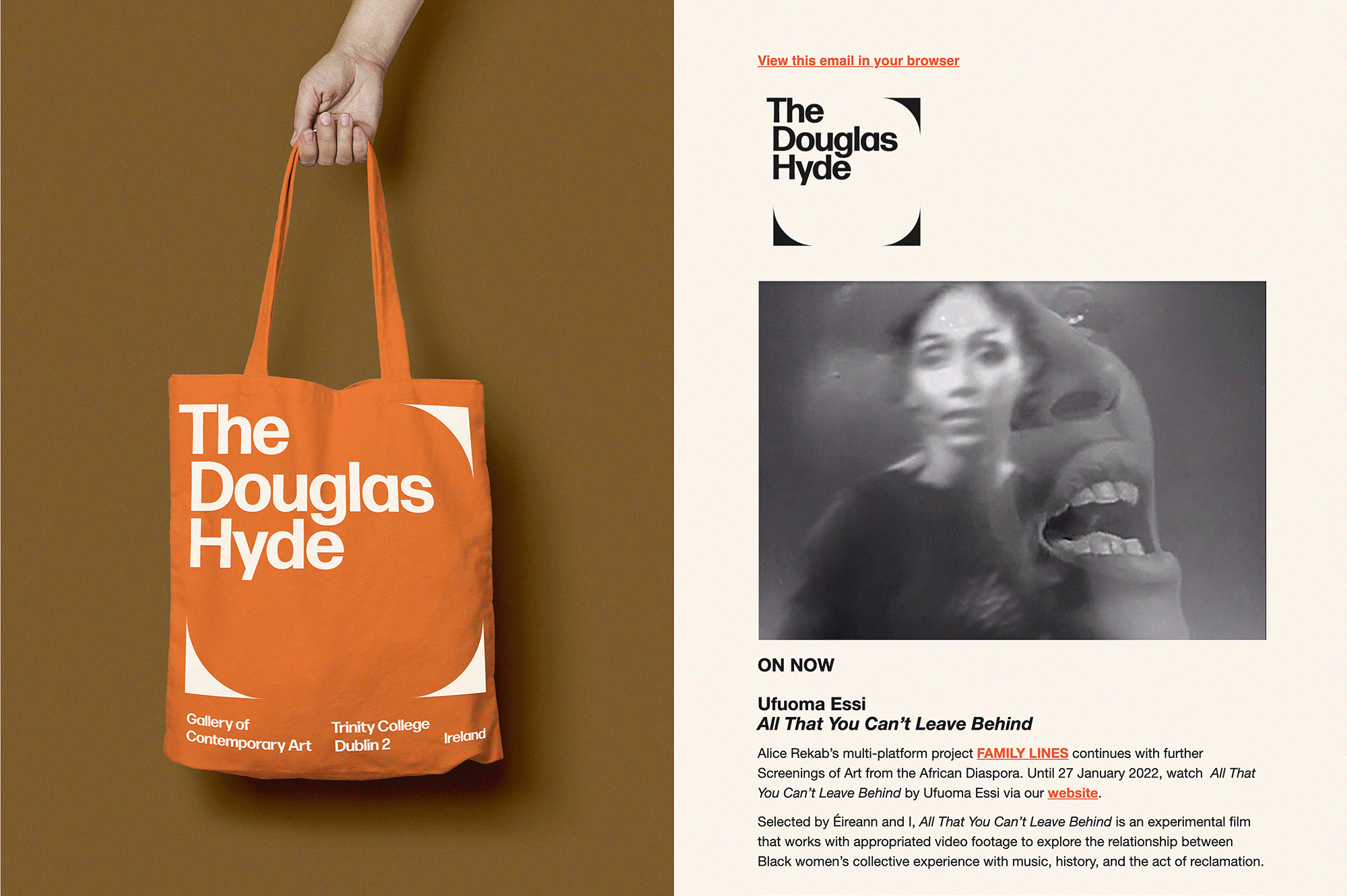The Douglas Hyde
Designed by Rachel Copley McQuillan and Stina Sandström at Bureau Bonanza
Development: Alex Bradley
Director, The Douglas Hyde: Georgina Jackson
Learning & Engagement Curator, The Douglas Hyde: Fernando Sánchez-Migallón Cano
Categories: Promotional / Website / Environmental / Print / Identity / Wayfinding / Signage / Livery / Social Media / Screen / Publication
Industry: Cultural
Tags: Contemporary art / Poster / Digital / Visual art / Art direction / Campaign / Rebrand / Art / Website / Logo / Businesss Card / Letterhead / Print / Signage / Branding / Identity / Culture / Libraries and Archives / Environmental / Arts / Brand Identity / Logo Design / Gallery / Programmes / Inclusivity / Ireland / Community / Logomark / Web design / Brand application / Brand identity / Logotype
Website: thedouglashyde.ie/
“The Douglas Hyde Gallery is a jewel in Dublin’s arts scene; it just needs to proclaim itself more proudly, joyfully and visibly and to project a warm welcome to all.”
Challenges that most contemporary art galleries struggle with have to do with accessibility and how to bring conversations about art to larger and non-traditional audiences. With this rebrand and website project we needed to create an accessible and friendly identity that welcomes new engagement, does away with any perceived intimidation whilst still maintaining its intellectual reputation.
The website and all other communications platforms needed a clear editorial structure that allow for tiered levels of engagement with an information system using headings, sub-heads, introductory paragraph-styles, ‘read more’ tags etc. going from engaging and welcoming to descriptive and informative to academic and critical.
A gallery in essence is an architectural space, hence it is with good reason that a gallery’s branding so often springs from different aspects of its architectural features.The concrete ceiling of the gallery and the Trinity Arts Block became the catalyst for the logo and subsequently the brand identity. In contrast to the harsh material quality of the concrete, the square cells with its rounded corners and curved edges that make up the ceiling “feel” surprisingly soft and remind us that the concrete once was a slow-flowing liquid poured into moulds. The rounded shape of the ceiling cells create a tension between sharpness and smoothness and of the negative and positive space.
Through deconstructing and multiplying the mark and re-assembling the fragments of the original form, we developed a dynamic and modular system of symbols, icons and framing devices. The display type face (Forma) echoes that same tension between sharpness and smoothness whilst being high in contrast, legibility and character. Wanting to avoid the white cube aesthetic the colour scheme is led by a ‘muted’ charcoal black and warm off white that can be combined with the warm colours that compliments the grey concrete.
